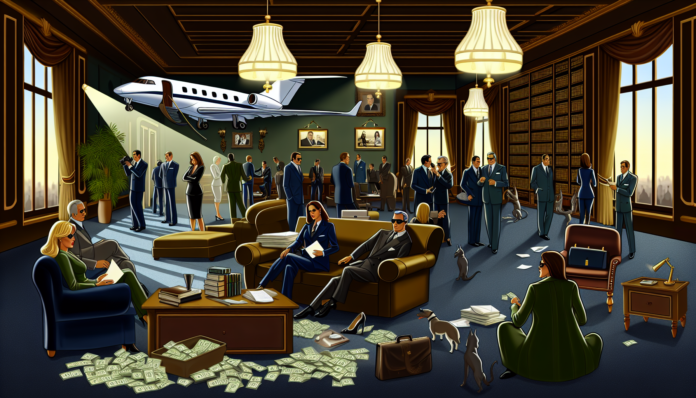Introduction
Welcome to the world of political scandals, where power and betrayal often collide in dramatic fashion. One of the most captivating modern examples is the Monica Lewinsky scandal involving President Bill Clinton in the late 1990s. At its core, this scandal not only tested the boundaries of personal integrity but also revealed the intricate relationship between politics, media, and public morality during a time of shifting societal norms.
The Clinton-Lewinsky affair unfolded against the backdrop of the 1990s, a time marked by relative economic prosperity but also by cultural conservatism. The social attitudes of the time were heavily influenced by traditional values, making the revelation of an extramarital affair particularly shocking.
The Scandal
The scandal erupted in January 1998, when news broke of an affair between President Clinton and Monica Lewinsky, a 22-year-old White House intern. The details were salacious: Clinton allegedly engaged in sexual encounters with Lewinsky in the Oval Office. A pivotal moment came when Lewinsky’s emails and a blue dress, stained with Clinton’s DNA, became central evidence in the ongoing investigation.
Key Events:
- January 1998: News leaks initiated by Linda Tripp, a co-worker of Lewinsky, who recorded conversations in which Lewinsky divulged details about her relationship with the President.
- August 1998: Clinton famously stated, “I did not have sexual relations with that woman,” in what became a defining moment of his presidency, showcasing the conflict between personal truth and public persona.
- Impeachment: In December 1998, Clinton was impeached by the House of Representatives on charges of perjury and obstruction of justice but was acquitted by the Senate in February 1999.
The media frenzy surrounding the scandal was relentless, fueled by 24-hour news coverage that dissected every aspect of the affair. Publications like Time and Newsweek dominated cover stories, often sensationalizing details to capture the public’s attention.
Moral and Cultural Analysis
Society’s reaction to the scandal was mixed, underscoring the complexities of morality in politics. Many conservatives viewed Clinton’s actions as a moral failing befitting impeachment, while a significant portion of the public expressed sympathy for Clinton, framing him as a victim of partisan politics.
Consequences for those involved:
- Bill Clinton: While he faced impeachment, Clinton eventually remained in office and experienced a revival in popularity post-scandal, suggesting a disconnect between his political efficacy and personal failings.
- Monica Lewinsky: Once vilified in the media, she has since become an advocate against cyberbullying and has publicly reflected on the impact of the scandal on her life.
Modern Perspective:
If the scandal occurred today, public response may differ significantly. In the era of #MeToo, politicians are held to stringent moral standards, emphasizing the importance of consent and respect in all relationships. Lewinsky’s narrative would likely garner more empathy, with calls for accountability focusing on power dynamics rather than solely personal choices.
As our understanding of gender and power evolves, the Clinton-Lewinsky affair stands as a reminder of how societal norms shift, reflecting changing attitudes towards privacy, scandal, and personal conduct in the political arena.
This exploration of a pivotal moment in political history reveals not only the intricacies of power and public perception but also how far we have come—and how far we still have to go—regarding the issues of morality and transparency.

